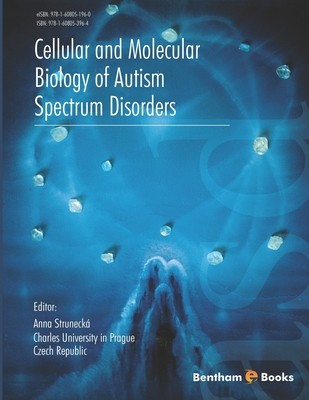
- We will send in 10–14 business days.
- Author: Anna Strunecka
- Publisher: Bentham Science Publishers
- ISBN-10: 1608053962
- ISBN-13: 9781608053964
- Format: 21.6 x 27.9 x 1.6 cm, softcover
- Language: English
- SAVE -10% with code: EXTRA
Cellular and Molecular Biology of Autism Spectrum Disorders (e-book) (used book) | bookbook.eu
Reviews
Description
Over the past several decades the incidence of autism spectrum disorders (ASD) has increased dramatically. The etiology of ASD remains an unsolved puzzle to scientists, physicians, pediatricians, psychiatrists, and pharmacologists. This book will address what is presently known concerning the pathophysiology of ASD from a cellular and molecular perspective. Our explanation is based on the interaction between repetitive systemic immune stimulation with concomitant chronic brain activation of microglia, which leads to overstimulation of glutamate receptors and inflammatory cytokine receptors. The book will explain, for the first time, the effects of immunoexcitotoxicity on the brain development, neurophysiology, and pathology. This book will not only attempt to explain the finding in ASD, but will offer treatment proposals that address each of these mechanisms. It will also explain how previous, often successful treatment methods, may indeed operate through the immunoexcitotoxic mechanism.
EXTRA 10 % discount with code: EXTRA
The promotion ends in 20d.16:55:21
The discount code is valid when purchasing from 10 €. Discounts do not stack.
- Author: Anna Strunecka
- Publisher: Bentham Science Publishers
- ISBN-10: 1608053962
- ISBN-13: 9781608053964
- Format: 21.6 x 27.9 x 1.6 cm, softcover
- Language: English English
Over the past several decades the incidence of autism spectrum disorders (ASD) has increased dramatically. The etiology of ASD remains an unsolved puzzle to scientists, physicians, pediatricians, psychiatrists, and pharmacologists. This book will address what is presently known concerning the pathophysiology of ASD from a cellular and molecular perspective. Our explanation is based on the interaction between repetitive systemic immune stimulation with concomitant chronic brain activation of microglia, which leads to overstimulation of glutamate receptors and inflammatory cytokine receptors. The book will explain, for the first time, the effects of immunoexcitotoxicity on the brain development, neurophysiology, and pathology. This book will not only attempt to explain the finding in ASD, but will offer treatment proposals that address each of these mechanisms. It will also explain how previous, often successful treatment methods, may indeed operate through the immunoexcitotoxic mechanism.


Reviews